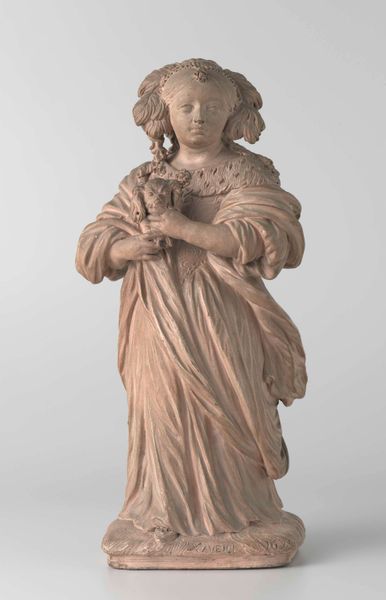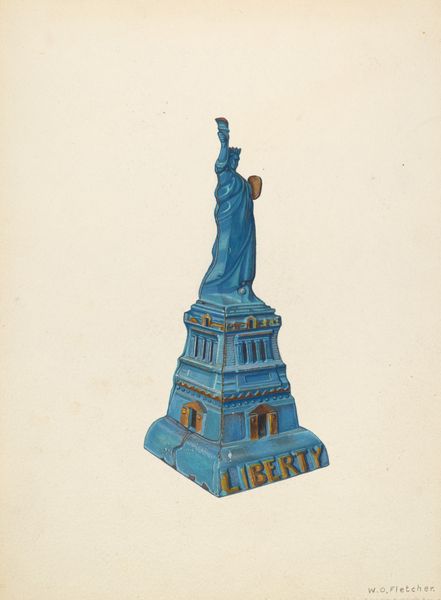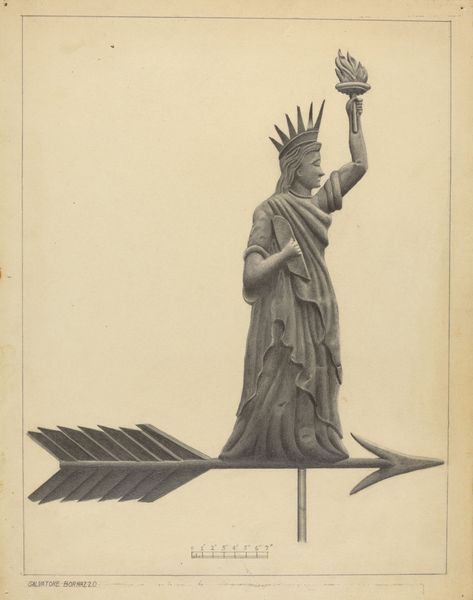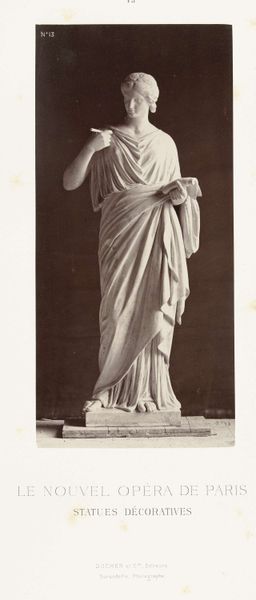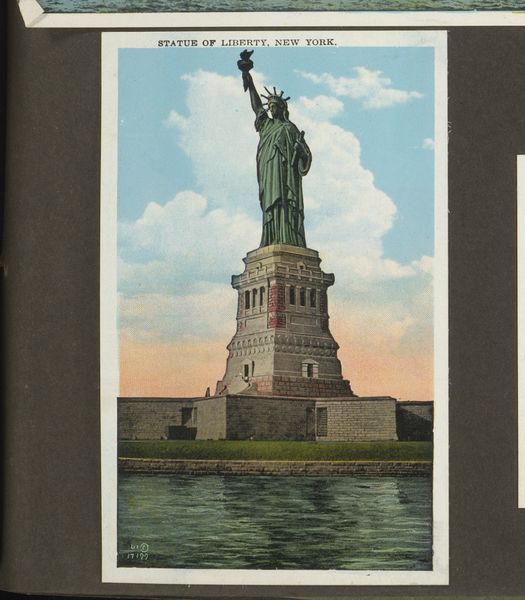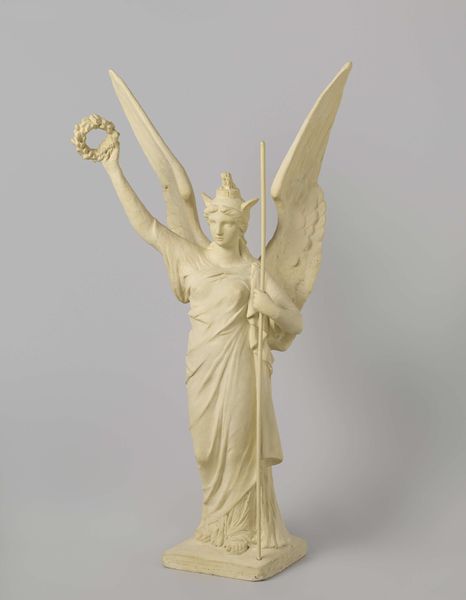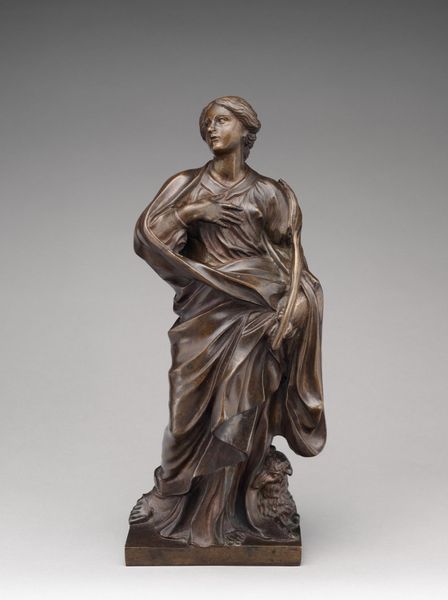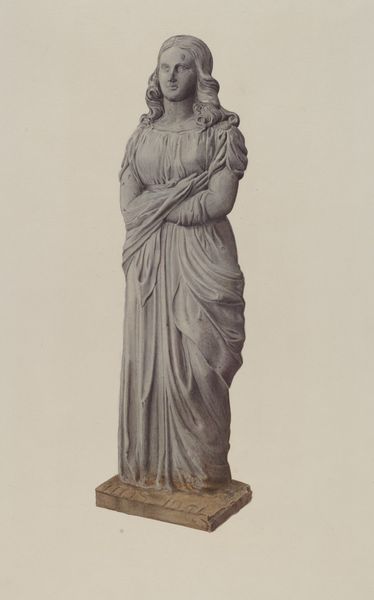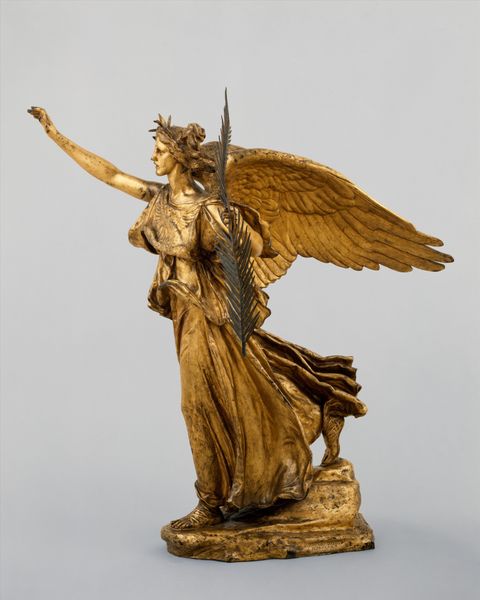
Dimensions: wt. confirmed: 47 3/4 in., 56.4 lb. (121.3 cm, 25.6 kg)
Copyright: Public Domain
Curator: Immediately striking, isn't it? There's something simultaneously grand and static about its form. Editor: Indeed. This is Fréderic-Auguste Bartholdi's bronze sculpture "Liberty," created in 1875. Of course, we know the full-scale version of this concept now graces Liberty Island in New York, gifted from France. But looking at this one, its Neoclassical style imposes such formal clarity. I can't help but analyze the elegant draping and the assertive verticality—the balance he achieves. Curator: Absolutely. Though considering when Bartholdi conceived of Lady Liberty, we also have to grapple with France’s own turbulent history with liberty and revolution, particularly during and after the Reign of Terror. The idea of France, during that time, gifting Liberty is fraught when considering France’s internal issues with that concept. How do you read those sociopolitical tensions, given that context? Editor: The semiotic construction is particularly fascinating: the torch held high, the tablet inscribed with the date of the Declaration of Independence. These symbols operate within a very specific visual language. Bartholdi expertly manipulates these forms to convey the allegorical essence of liberty as an ideal. Look at the radiating spikes of her crown—they direct your sight upwards, furthering the impression of immensity. Curator: It’s more than just ideal, though; isn't it a deliberately exclusionary visual. The representation is consciously that of a white woman and the "liberty" and the concept thereof was also for white individuals at that time in America's and France's respective histories. We can't isolate the object from that implication and meaning making, I would argue. Editor: Well, whether intentional or not, its imposing stature, regardless of medium, and sharp lines undeniably create a powerful presence, making the concept almost…palpable. Curator: It forces us to reconsider whose stories get monumentalized. Editor: Yes, it is certainly complex when viewed through both aesthetic appreciation and social history, which is the most complete experience. Curator: Agreed, giving rise to so much discourse and deeper understanding around a single artifact.
Comments
No comments
Be the first to comment and join the conversation on the ultimate creative platform.

